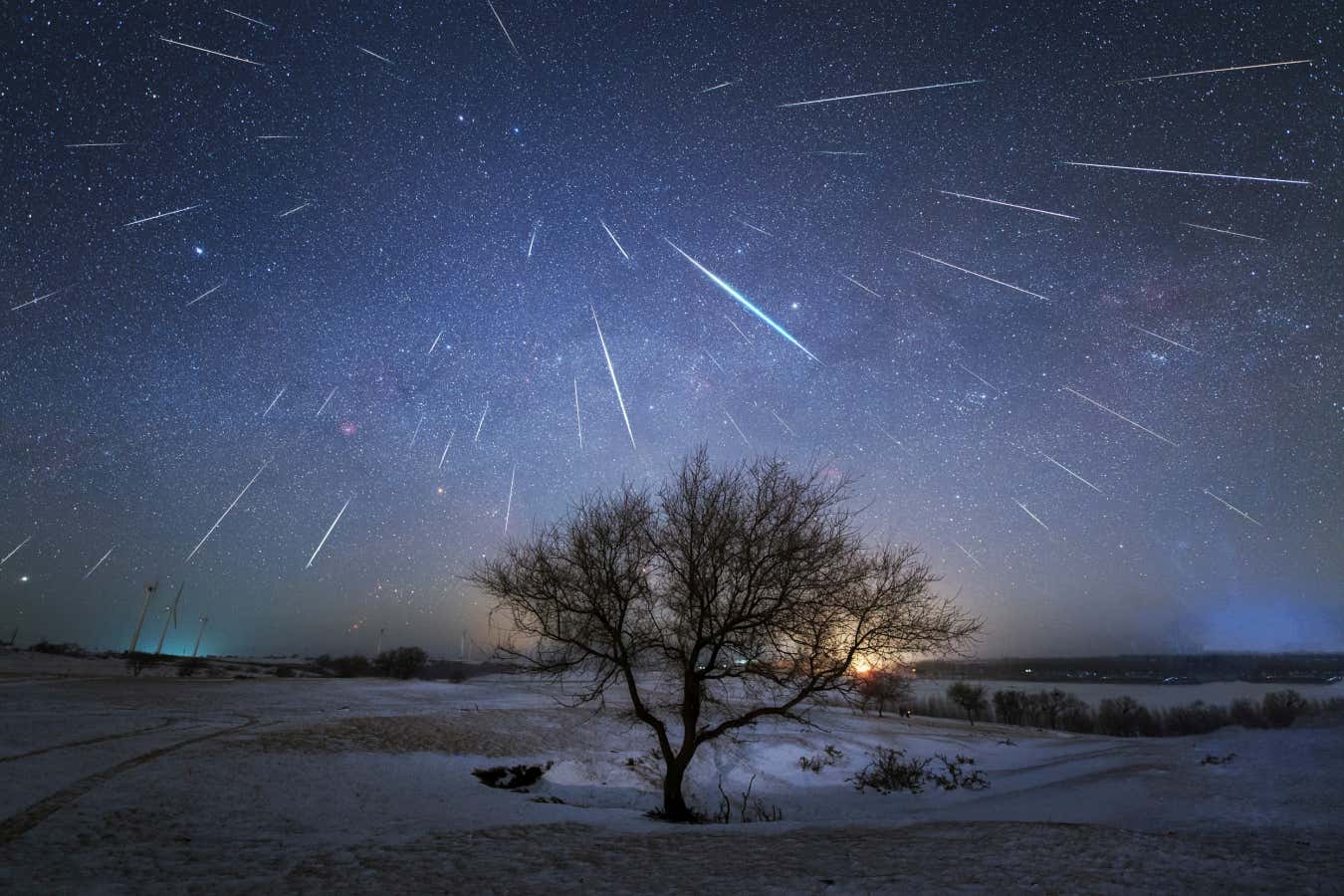

The Geminid meteor shower over Jade Dragon Snow Mountain in China
Jeff Dai/Stocktrek Images/Alamy
The peak of the Geminid meteor shower, very early on the morning of 14 December, is expected to dazzle this year. The shower started on 19 November and will end on 24 December, but keep an eye out over the coming days because activity is ramping up.
What are meteor showers?
Meteors are bright flashes of light that move quickly across the sky. They are caused by pieces of dust and debris from space entering the atmosphere, where they slow down and burn up. This happens every so often and can occur at any time. On a given night of stargazing, you might see a couple of meteors every hour. Meteor showers are periods in which there is a notable increase in the number of meteors, caused by Earth moving through a trail of debris left behind by a comet or asteroid. Because of this, they tend to happen around the same time each year, as the same debris trails are encountered again and again.
What is the Geminid meteor shower?
The Geminids aren’t caused by a comet, as most meteor showers are, but by an asteroid called 3200 Phaethon. But this is an unusual asteroid, with a comet-like vapour tail that puzzled astronomers for some time. In 2021, NASA suggested it might be caused by sodium “fizzing” on its surface.
How do I watch the Geminids?
No special equipment is needed to watch the Geminids, just a clear sky. This year will be particularly good, as a new moon on 12 December means there will be very little moonlight, making it easier to see the shower against the night sky. The Geminids have been known to produce up to 150 meteors per hour in dark skies. You are unlikely to see that many, especially if you are somewhere with light pollution, but it is worth watching wherever you are. Even just a few are beautiful to behold.
How do I find Gemini?
Like all meteor showers, the Geminids are named after the constellation they appear to come from in the sky – in this case, Gemini. You don’t have to find Gemini to see the meteors, as they will travel across the sky. But if you want to, Gemini is easy to identify thanks to its two bright stars, Castor and Pollux.
First, find Orion and look for its two brightest stars, Rigel and Betelgeuse. Betelgeuse is a reddish star in the top left of Orion when viewed from the northern hemisphere, or its bottom right when viewed from the southern hemisphere. The blue-white Rigel is at the bottom right of Orion in the northern hemisphere, but at the top left in the southern hemisphere.
To find Gemini, draw a line from Rigel to Betelgeuse, then keep that line going about the same distance again to find two bright stars close to each other: these are Castor and Pollux. This is where the Geminids will appear to come from.
Topics: